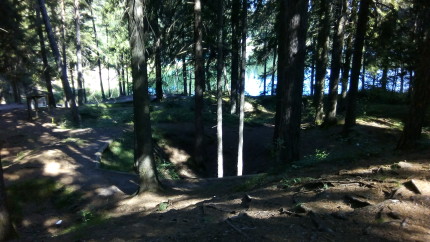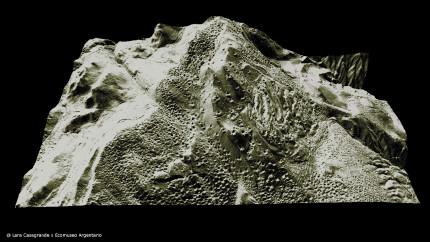Medieval mines of Civezzano, Autonomous Province of Trento (IT)
The area of Monte Calisio, around Civezzano (Italy) is a mountainous plateau at an altitude between 800 and 900 meters above the sea level, located in the Southern Alps in the Autonomous Province of Trento. It was a very important medieval mining area. Mostly silver ore (galena argentifera) has been exploited for centuries, especially from the 12th to the 15th century. According to a historical source (Codex Wangianus), a complex working organisation could be reconstructed, including specialised workers coming from Germany (Tirol, Bavaria, Bohemia, Saxony). Thousands of ground de-pressions (sinkholes) indicating former mine shafts partly also detected due to LiDAR scans are still visible on the surface of an area of over 12 km2. A labyrinth of galleries and mine workings has been partly documented; some are still open and well preserved, with mining traces still visible.
THREATS AND OPPORTUNITIES
Archaeological ground monuments especially such as mining sinkholes are continuously endangered by agricultural activities, for instance by viticulture. In addition, serious damage to the integrity of archaeological goods – which can be found in the silver mines of Civezzano, is caused by illegal and extremely dangerous treasure hunting and caving. There are itineraries and guided tours to discover the traces of mining activity but no gallery is open to the public now. A virtual reconstruction conducted within the project will enable to valorise the mines for regional development, in particular for sharing it with local population, local economy and tourists.

PLANNED PROSPECTION / VISUALISATION ACTIVITIES
It is planned to lead GPS surveys on new areas and to collect data from already available archives and existing field works. Old and recent maps of the underground will be georeferenced using a GIS, creating an overlay with the LIDAR DTM where mining traces are quite visible, that will be useful to connect underground and surface features. A new research on the basis of historical and current cartography, as well as Lidar will be carried out. All the digital data will be then entered into a GIS platform. As a result a 3D model of the interior and external parts of some mines and basins will be created. This will be visualized using a mobile phone app and videos (renderings) located in totem(s) and online on institutional websites. The mobile app will allow VR/AR effect in order to see the hidden interiors (digitized in 3D) which are not accessible to the public.

STAKEHOLDERS INVOLVED IN THE PROJECT
The area is under the authority of different local administrations that are going to be involved as stakeholders. The protection of the heritage, including mines, pits, mining tools, etc. is ensured by the Cultural Heritage Department of the Autonomous Province of Trento, which also takes an active part in the project. It is possible that the survey and other activities are going to take place on private properties. Therefore the involvement of the owners into the project and their authorization will be necessary.
REGIONAL STRATEGY
Klick here for the planned regional strategy (after project ending).
